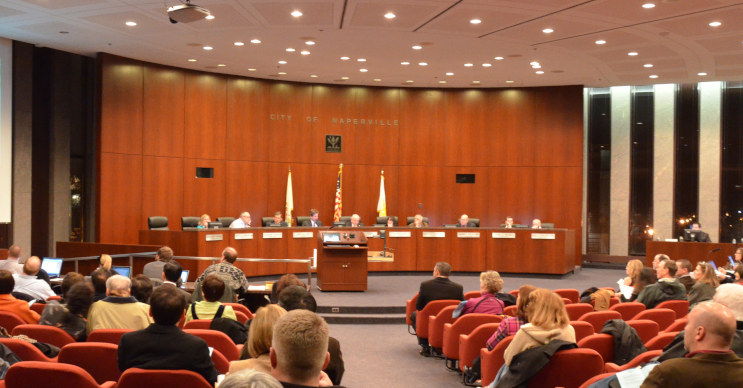Archives
June 2024
Categories
All
|
Back to Blog
Image credit: Michael Kappel 1222 words / 5-minute read Summary: More communities around the world are interested in enacting their own outdoor lighting policies, but the ideas and concepts in them are often unfamiliar and confusing. Where should one begin? This month, we dig into the major sections of typical policies and look at what makes certain ones "good," "better," or "best." In societies founded on the rule of law, the laws are our rules of the road. They influence many aspects of our lives and how we interact with each other. When created through the democratic process, they represent the prevailing views of society. In turn, implementing rules and non-binding best practices join laws as a complete description of how we intend society to function. Laws, bylaws and ordinances governing outdoor lighting prescribe how we light our world at night. These policies say when and how light at night can and can't be used in outdoor spaces. In an indirect way, they also address the management of a natural resource: nighttime darkness. When written well and implemented properly, they can make real differences in the quality of the nocturnal environment. Otherwise, they tend to be ineffectual. Why do governments make these policies? What are their intended outcomes? What kind of provisions do they contain? And which varieties have the greatest affects on light pollution and dark skies? In this post, we delve into all those topics and more. Why lighting policy mattersThere are many reasons why a jurisdiction might want an outdoor lighting policy. We wrote about this topic before, so here is a short summary: Regulating outdoor lighting can contribute in positive ways to the quality of life in a community. Well designed lighting enhances the atmosphere of outdoor spaces at night and helps ensure public safety. Writing such policies establish clear rules for everyone, from property owners to the government itself. They can resolve ambiguities about kinds of lighting a community will and won't accept. And they establish metrics and set thresholds for compliance to make the rules more fair. Importantly, they can help defuse disputes between neighbors before they begin. Private property owners have both rights and responsibilities. Among the rights are peaceful enjoyment of one's property. That means we have a responsibility to be good neighbors and not impede others' rights. Outdoor lighting policies can help ensure poor-quality lighting is not installed. Adherence to the rules limits instances of 'light trespass' that cause friction among neighbors. With all this in mind, there are several components of outdoor lighting policies worth examining. As a community decides which are best for its circumstances, it can choose from among various options. Good/Better/Best approachesHere we review the main elements common to many outdoor lighting policies and suggest contents that aim higher in each step up. We label these "Good", "Better" and "Best", where "Best" contains all of "Better", and "Better" contains all of "Good". We intend the suggestions here mainly for U.S. contexts, but the ideas may be adapted to legal systems anywhere in the world. These lists are not prescriptive. In other words, there are combinations of items drawn from the different categories that might suit one place better than another. Careful consideration of local needs and preferences will tend to reveal them. Also, the lists are not exhaustive in their contents. Statement of purpose This is a short explanation, in plain language, of why the local authority establishes the policy. It can also contain recitals, otherwise known as "whereas" clauses. Although the stated purpose of a policy isn't legally operable, it helps guide its future interpretation. That helps judges in civil cases implement the law as its framers envisioned. Good: Ensuring nighttime safety and adequate illumination; promoting orderly relations between neighbors; saving energy. Better: Enhancing quality of life; increasing amenity; establishing nighttime ambience. Best: Clearly identify dark night skies (and their enjoyment) as a valuable resource; recognizing activities like amateur astronomy and stargazing; protection of wildlife. Definitions Outdoor lighting policies inevitably involve the use of unfamiliar technical terms. Concise definitions are important to add clarity to the words of the policy. The Illuminating Engineering Society publishes a useful list of definitions of technical terms. In some cases it may be helpful to illustrate definitions with figures. Even cartoon drawings can reinforce complex concepts. And some jurisdictions add their own definitions of legal terms according to other requirements. Good: A few basic technical terms such as shielding and color temperature. Better: Further technical terms; figures illustrating some concepts like shielding. Best: Meanings of certain common words ("and", "is", etc.) in context. Applicability These statements say in which circumstances the policy is operative. This means that where the law is applicable, outdoor lighting must follow it. They may also state when the policy does not apply, in what are usually termed "exemptions". These statements should be as specific as possible to prevent ambiguities that can make enforcement difficult. Good: All new public lighting. Better: Some private lighting (with limited exceptions); amortization with limited triggers Best: All private lighting; amortization with a sunset date Note that "amortization" means a process by which existing lighting that does not follow the law is brought into compliance. Amortization is "triggered" when one or more events occurs. For instance, if a property owner carries out major renovations, a compliance trigger may require that all site lighting be made compliant. In the best policies, exemptions for existing, non-compliant lighting should end on a future date. This allows property owners adequate time to make changes. Main provisions This section contains the real substance of the policy. It prescribes specific standards that lighting must achieve to be lawful. This is where policies often necessarily become technical in nature. Here is where a jurisdiction can enact the requirements we know to be most effective in reducing light pollution. Good: Full shielding of most light fixtures; light color limitations; 'warranting' of public lighting. Better: Full shielding of all luminaires; light trespass prohibited above a threshold; public lighting curfew; lumen density limits. Best: Lighting Zones; light trespass completely prohibited; private lighting curfew; illuminance specifications. Prohibitions Certain kinds of lighting are so problematic or objectionable that some jurisdictions forbid their use entirely. This section declares those types of lighting and their applications to be unlawful. Again, clear definitions of terms may be needed to resolve ambiguities. Good: Unshielded lighting; mercury vapor lamps. Better: Searchlights and other high-intensity light sources, except as required in emergencies; laser light sources. Best: Dynamically varying lights. Communities may want to consider these further provisions for their outdoor lighting policies: More items in Better policies
More items in Best policies
How to get help creating or updating a policyThere are now many exemplary outdoor lighting policies in different world jurisdictions. Often, communities can find examples in their countries that they may use as effective models for writing their own policies. Remember that whatever a community chooses must withstand legal review in the relevant jurisdiction. It is helpful to ask a knowledgable attorney in that area to review the policy before proceeding to write it into law.
Outdoor lighting policy is a technical and often nuanced kind of public policy to write. Some communities may like the idea of having such policies, but they find the process daunting. These places will benefit from the expertise of professionals who can understand their local circumstances and provide custom advice. If your community is looking for help in writing a good local policy, contact us today.
0 Comments
Read More
Your comment will be posted after it is approved.
Leave a Reply. |
 RSS Feed
RSS Feed

